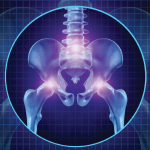“[Dr. Sarno] didn’t have the science and the studies to prove it; he just had a ton of patient success stories,” Dr. Schubiner said. “He’s being bashed now if you read articles about him, but he was actually right. Science now has confirmed the vast majority of his approach.”
The basic concept, Dr. Schubiner said, is that stress and emotions can cause the same changes in the brain and the body as a physical injury. These changes in people with adverse childhood events or other types of trauma predispose people to conditions, such as anxiety, depression, obesity, heart disease and autoimmune disease.
After reading his books, Dr. Schubiner went to work with Dr. Sarno for a few days. When he returned to his hospital, he offered to start a clinic to treat people with chronic pain. Dr. Schubiner listened to patients and took detailed histories, which many physicians don’t have time to do. By acknowledging that their pain is real—and not dismissing it, which may occur in some other clinical settings—providers can help patients take control of it, he explained.
Dr. Schubiner uses pain reprocessing therapy, which assists patients in perceiving pain signals sent to the brain as less of a threat. As part of this treatment, patients receive help managing emotions that can worsen their pain. He also uses a type of therapy developed at his center called Emotional Awareness and Expression Therapy.1 This approach targets the underlying emotions that may trigger pain and other symptoms.
Working with Patients
Before seeing a patient, Dr. Schubiner asks them to do some research to understand pain reprocessing therapy and his approach.
“I’m not trying to convince [patients] of something. I want to investigate with them and that gets into our diagnostic approach,” he said.
He also rules out any structural or lab-related problem that can be found on imaging or through an exam as a source of pain. Even if there is some normal, age-associated structural damage seen via imaging, Dr. Schubiner will ask questions to pinpoint the behavior of the patient’s pain, such as, “Does the pain move around or change based on cold, heat or other environmental factors?”
Next, he addresses the question of whether symptoms began and may be associated with specific life events.
Dr. Schubiner shared the story of a young woman with sacroiliac joint pain that started in May one year and then went away. This pain came back the following May. He asked her and her father if anything happened in May that affected her life. At first, the answer was no.

